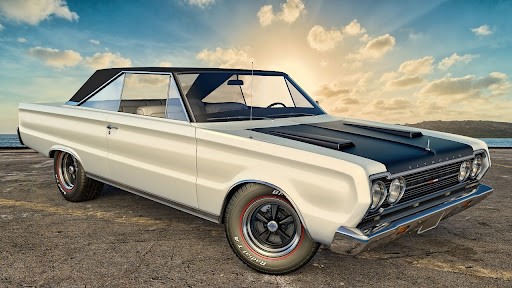Picture yourself driving down the road in a shiny classic, turning heads with its vintage charm and the loud roar of its engine. For many, fixing old cars is more than just a hobby; it’s a love, a path that brings forgotten cars back to life. Because of this love, there are still more than 6 million classic cars on the road right now. Whether you dream of bringing back a dusty gem from your granddad’s garage or long for a smooth and timeless ride, classic car restoration is nothing short of exciting and satisfying. But it can feel like stepping into an unknown land for those new to it.
And for the good news: to get started, you don’t need to be an experienced mechanic; all it requires is some passion for cars, some willingness to get your hands dirty, and patience. Fixing classic cars is about so much more than fixing old vehicles. It’s about rediscovering craft, developing new abilities, and creating something entirely yours. So, if you’re ready to take on this journey, here is everything you’ll need to know!
Valve Covers and Engine Maintenance
When it comes to classics, one of the first things you’ll want to check is the engine. After all, you want to stay safe on the road. Here, the valve covers play a key role. These covers shield the inner parts of the engine from dirt, junk, and oil spills. In many classic cars, the valve covers may be old, rusty, or broken from years of neglect. This makes them one of the first parts you’ll want to check and maybe replace or fix up.
Valve covers vary depending on the vehicle type and model, so you need to look for a cover specific to your car. If you’re lucky, you may find a similar one for cheaper, but you don’t want to risk putting faulty parts on your engine. So, if you’re driving a small block Chevy, look exactly for valve covers for small block Chevy vehicles. You can find reputable sellers both around town and online, so you can rest assured that the part is 100% original.
Setting Realistic Goals for Your Restoration
Restoring a classic car can be thrilling, but in the end, you have to set realistic expectations and time frames and determine if something is worth fixing and investing in. Classic cars require a big portion of your time, money, and a lot of effort. If you’re new to this, it may seem terrifying, so you need to plan beforehand.
First off, decide how much work you’re willing to put in. Are you trying to fix the whole car from scratch or fix the looks and some minor issues? After you decide, it’s time to think about the budget. Fixing old cars can cost a lot, mainly if you need old parts or hire experts for hard tasks. Include costs for tools, parts, work, and surprise repairs.
Then, make a timeline. Fixing a classic car isn’t a weekend job; it might take months or even years, based on your skills and the car’s state. Divide the work into steps. Tackle each part, like the engine, frame, or inside, one at a time. Having a good plan will help you stay focused and avoid feeling lost.
The Importance of Bodywork and Paint
Bodywork is a key part of fixing up old cars. As time goes by, cars show rust, dents, and other damage that can really hurt how they look and may weaken them too. For newbies, tackling bodywork can seem very tough, but it’s crucial for a sleek final look.
The first thing to tackle is usually rust. You can sand away surface rust or use rust removers, but if it is really bad, you might need to weld and use new panels. Newbies should be careful when cutting rusted parts and welding new ones, as not doing it right can cause weak areas or parts that don’t line up well. If you’re not sure you can do big fixes, think about asking a pro for help.
Once bodywork is done, shift focus to paint. New paint can really change a classic car, but good prep is key. Sanding, using primer, and picking the right paint type are vital steps for a nice, even look. Newbies might want to try painting on a small part first or using a spray gun to stop common slip-ups like streaks, drips, or uneven paint.
Upgrading the Interior for Comfort and Style
When fixing up old cars, don’t just think about the outside and engine—the inside is important too. A nice, fixed-up interior adds comfort and style, making the car more fun to drive while raising its worth.
First, check the seats, dashboard, and carpet. The original fabric might be old, torn, or faded. Putting in new leather can give the car a fresh look but still feel old-school. If you’re new to this, you can purchase car covers as an easier, faster, and cheaper alternative.
Remember to fix or swap out the dashboard, gauges, and steering wheel. Worn-out dash panels look bad, and bad gauges might cause issues. Think about getting modern gauges that look vintage but work better. Also, don’t ignore small things like door handles, window cranks, and trim, which really help in the end.
Bottom Line
Restoring old cars is a heartfelt task that needs time, effort, and care for details. For those new to it, starting with a solid plan, setting reasonable goals, and handling each step carefully is key. From engine covers to body paint, each stage has its own hurdles, yet with the right outlook, you can end up with a lovely car that shows your hard work and love. Whether you’re fixing up a car for fun or saving a part of car history, the path you take is as satisfying as seeing the car once it’s done.





 Image source
Image source Image source
Image source




